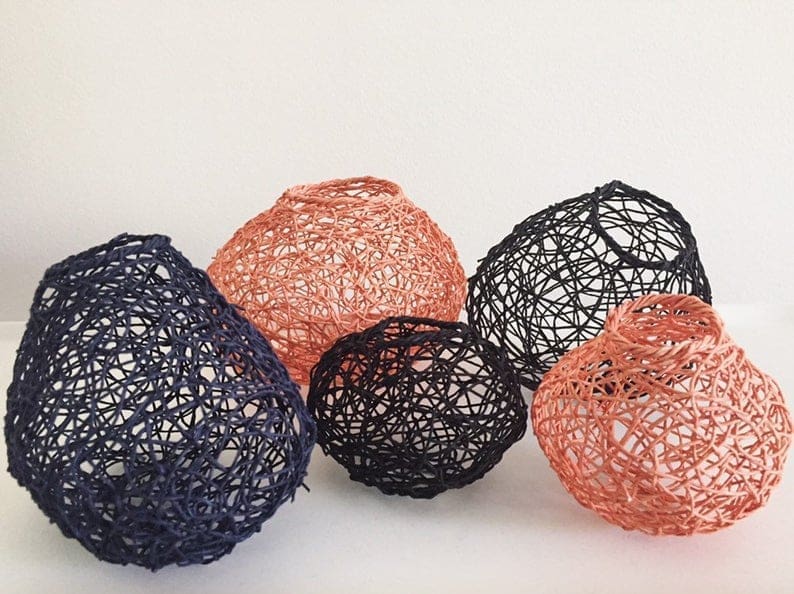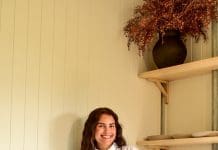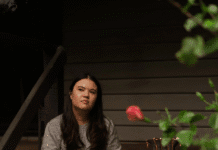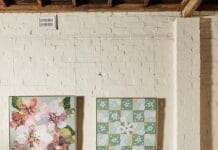We love rediscovering old styles of art that are new and trendy again. Just as we did when we stumbled upon Australian tapestry artist Lee Leibrandt.
From intricate designs to bold colours and textures, Lee’s tapestry art sparks intrigue by being a truly unique art form.
Related article: Uncovering the unique woven wall art from Studio Nom
Related article: Discovering the beautiful and unique embroidery art of Fleur Woods

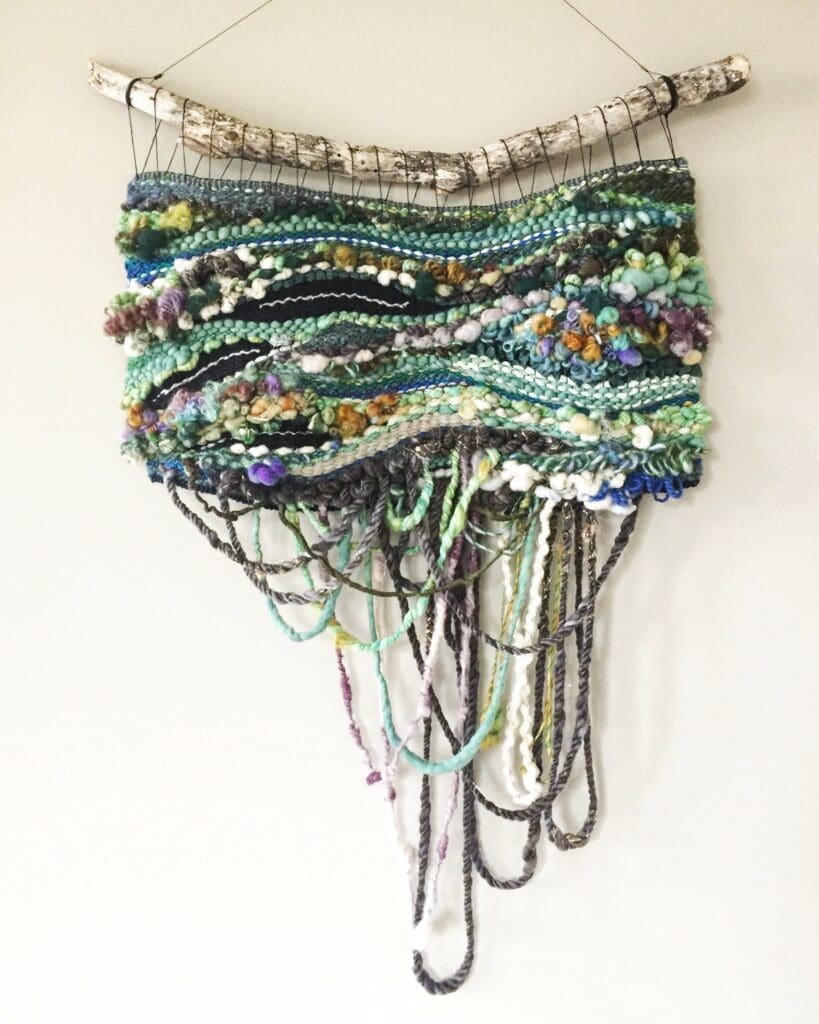
A creative at heart, Lee is a tapestry artist based in Canberra who discovered her love for weaving almost by accident.
“I grew up in Central West New South Wales but have lived in Canberra for over 20 years. When the world isn’t experiencing a global pandemic, my husband and I enjoy travelling — particularly road tripping around the US,” smiles Lee.
“Our travels have really inspired my art and are the backbone to many of my pieces.
“I’ve always been creative, but my problem was not knowing what my ‘thing’ was. A few years ago while we were travelling in the US, I started following a creative journal that encouraged trying different mediums, making stuff just for the sake of it… for fun.
“At the same time, I happened to find a basket weaving kit so gave it a go. I really liked the process and by the end, I was just weaving using anything. My go-to looms were forked branches since we were overseas and on a budget!”
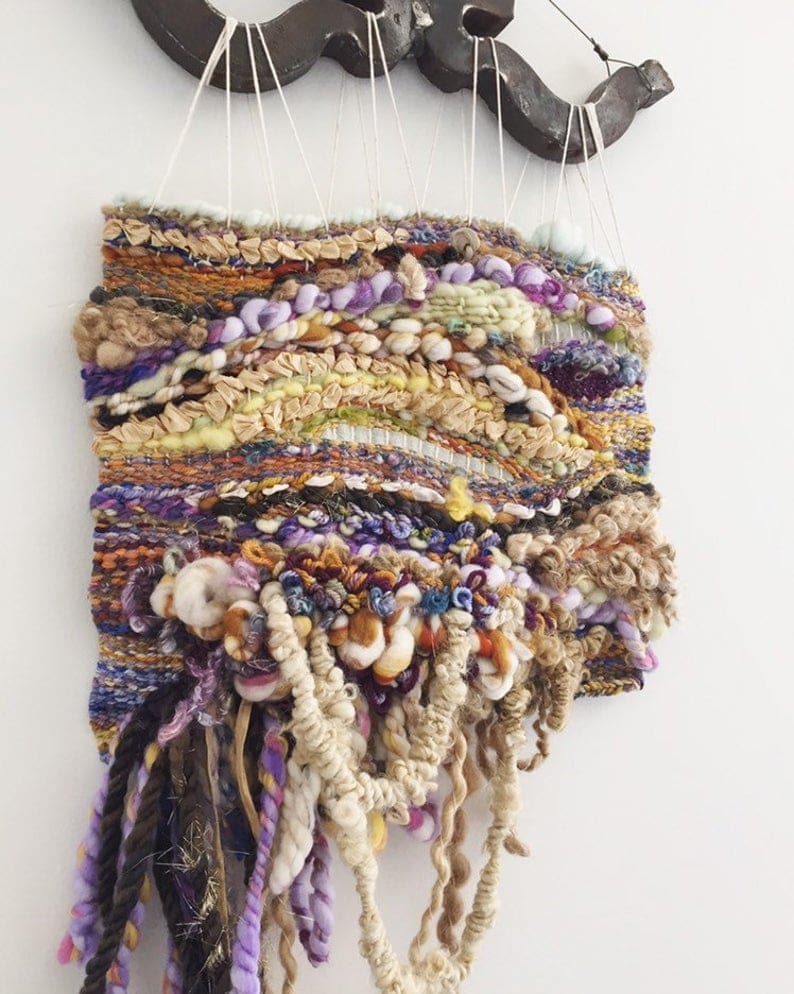
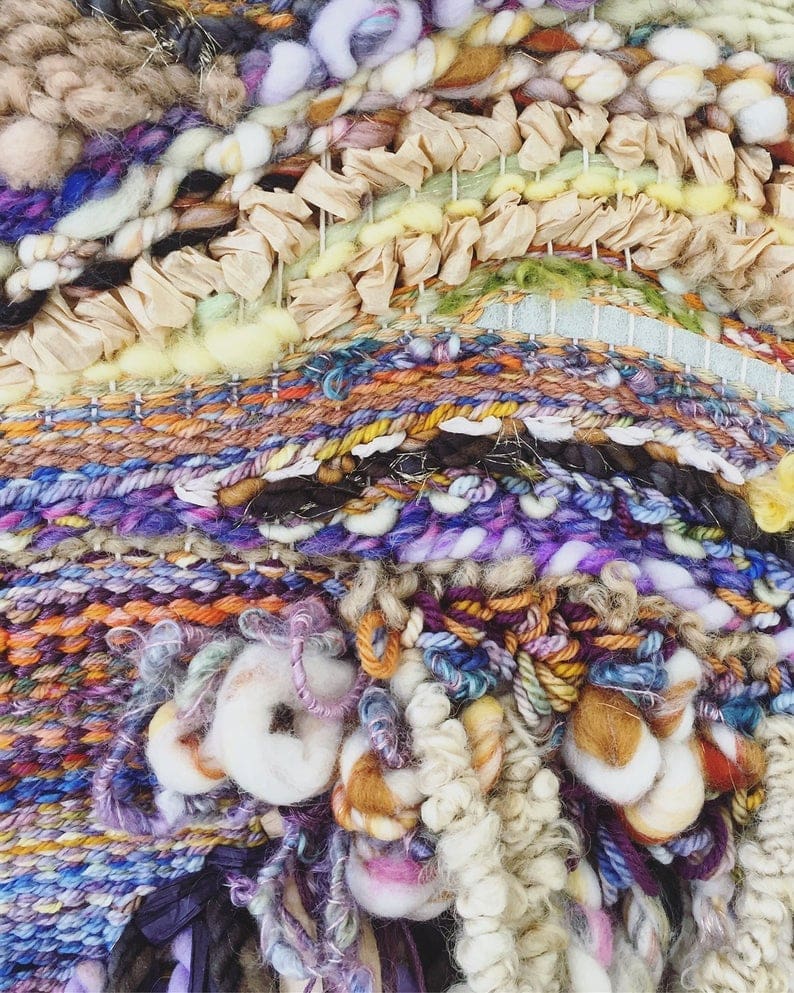
A more formal course of study helped Lee find her true calling… her ‘thing’ if you will.
“After this stint of travel, we returned home and I felt pulled towards a more formal type of learning. I wanted to know the fundamentals and have a solid base to move my craft forward.
“So I attended a tapestry weaving short-course offered through the ANU’s School of Art and Design. By the end of the second class, I knew for certain it was my ‘thing’!
“As well as weaving, sometimes I spin my own yarn. I often collect locally produced yarn or fibre to spin on our travels, so there are a whole heap of little memories and vignettes to recall when I look at my tapestries.
It seems even more special when you can weave a tapestry that includes your own handspun yarn.


While bold textures and colours feature in many of Lee’s tapestries, it’s landscapes and nature that are her true inspiration.
“I generally weave small format tapestries, both abstract and representational. Most of my work to date has been inspired by the natural landscape, and my experiences and memories of places.
“I love exploring the variations in texture and organic patterns I’ve observed in the Australian bush, the deserts of Utah and New Mexico, or the mountains of Colorado.
“I also work sporadically on an ongoing personal project titled Specere, which documents small details observed in nature. Specere translates as, ‘to look or notice’. I am forever obsessed with the natural patterns you see on tree trunks and bark, especially eucalyptus trees,” says Lee.

As a tapestry artist, taking a once dated art form and bringing it back into fashion, we were interested to learn the creative process behind Lee’s work.
“The process tends to split into 3 main phases — design, create and finish. One of these phases is not so fun, but definitely necessary to have a well-presented artwork at the end!
“I tend to work mostly from photographs I’ve taken and my memory when designing a tapestry. Once the design is set, I translate the image I want to weave into a cartoon — a basic line drawing of the design — that sits behind my warp and guides me throughout.
“Then comes the weaving part. Tapestry is woven from the bones (or warp) up. This means, creating both the support structure on which you weave, as well as the image that eventuates.
“Simply put, the warp is the vertical backbone of the tapestry. The yarn I weave with (the weft) then alternates over and under the warp threads, across and back until you fill up the warp.
“Everything I do is by hand on a frame loom. A tapestry can take me anywhere from 4 to 50+ hours to weave. It’s the definition of slow art!” laughs Lee.
I weave almost every day, even if it is just for a few minutes. Sometimes I think I’ve only been at my loom for 5 minutes, but then realise it’s been 2 hours! I think maintaining a daily, creative practice is important — both as an artist and for my mental health.
“Once done, I usually sit with the tapestry on the loom for a day or two to make sure I’m completely happy with the work before all the finishing has to happen.
“Lately, I’m really into framing my finished tapestries on timber. My father custom makes all the reclaimed timber frames and tablets I use for display.”
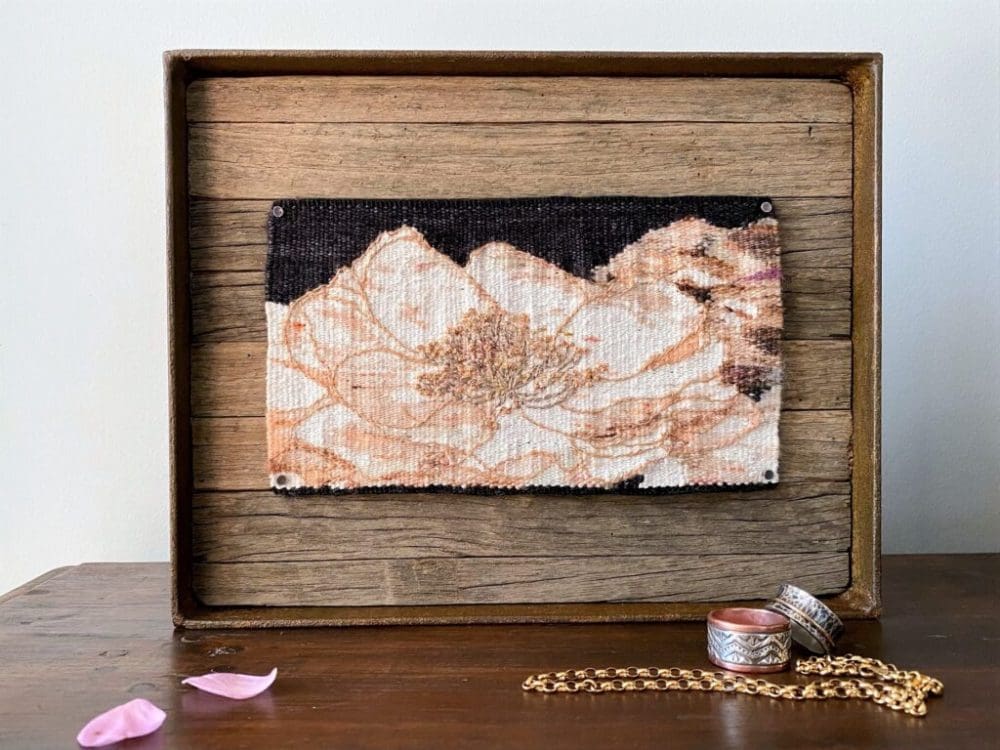
Relatively new to the art world, Lee continues to make her mark, creating incredible one-of-a-kind custom pieces for customers through her Etsy store. And more recently, being stocked at the National Library of Australia’s Bookshop.
“In amongst the chaos that was 2020, there were many exciting moments for me as an artist. Seeing my work available at the National Library of Australia has been an unbelievable opportunity this early in my career.
“I think the two biggest things I’ve learnt so far in my art career is firstly, find your own path.
“Don’t be so concerned about what everyone else is doing. It’s easy to get trapped into thinking that’s what you have to do too. While you might draw inspiration from those around you, your own personal creative journey is what’s going to light you up inside.
“And secondly, go at your own pace. It’s ok to do things on your own timeline, learn about your practice and medium. Allow yourself the time to improve,” Lee says wisely.
Huge thank you to Lee for sharing her tapestry artist creative process with us. You can find Lee’s beautiful pieces on her website and in the Gallery of Small Things. Be sure to check out her Instagram, too.
More artist profiles here

